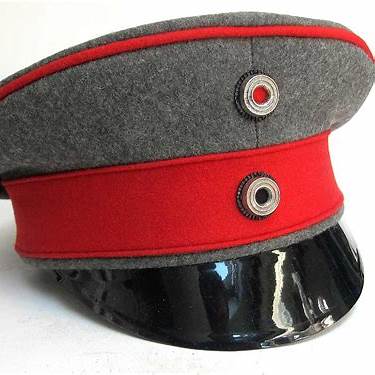
Comprehensive Guide to WW1 Uniform Types: German Caps, Hats & Allied Equipment
Published on Feb 28, 2025
A Comprehensive Guide to WW1 Uniform Types: German Caps, Hats & Allied Equipment
Introduction
World War I was a defining moment in global history, and military uniforms played a critical role in identification, protection, and tactical advantage. Uniforms varied among countries, with distinct caps, hats, and field equipment differences. In this guide, we will explore the different WW1 uniform types, focusing on German caps and hats while also examining the equipment used by the Allied powers to counter enemy forces.
WW1 Uniform Types: An Overview
Each nation involved in WWI had its approach to military attire. Uniforms were designed based on battlefield requirements, climate, and available resources. The German military, for instance, used practical yet distinctive uniforms that evolved throughout the war.
1. The German Uniforms of WW1
German uniforms in WW1 were known for their functionality and durability. The classic field-grey tunic (Feldgrau) became a trademark of the German army. The material and colour were chosen to provide camouflage on the battlefield while ensuring comfort for soldiers.
WW1 German Cap and Hat Varieties
Headgear was essential to WW1 German military uniforms, serving both protective and symbolic roles. Below are some of the most common types of German caps and hats:
- Pickelhaube (Spiked Helmet): Originally made of leather with a metal spike on top, the Pickelhaube was a symbol of the German military before the war. However, it was phased out in favour of steel helmets due to their inefficiency in providing protection.
- M1915 Bluse & Stahlhelm: The transition to steel helmets (Stahlhelm) in 1916 greatly improved battlefield protection, replacing the Pickelhaube. These helmets were designed to reduce head injuries from shrapnel and gunfire.
- Feldmütze (Field Cap): The soft cloth field cap was widely worn by German soldiers, providing comfort while still maintaining military discipline.
- Krätzchen (Peaked Cap): This cap was an essential part of the uniform, typically worn by non-commissioned officers and lower-ranking soldiers.
2. WW1 Allied Uniforms & Equipment
The Allied powers, including Britain, France, and the United States, had distinct uniforms and military gear. Their uniform designs focused on both durability and adaptability.
Notable Allied Uniform Features:
- British Army Uniforms: The British wore khaki-coloured wool uniforms that provided warmth and camouflage. The Brodie helmet was a critical advancement, offering better protection than earlier headgear.
- French Uniforms: Initially, French troops wore bright blue and red uniforms, but they later adopted the horizon blue uniform for better camouflage.
- U.S. Army Uniforms: American soldiers, or "Doughboys," wore olive drab uniforms with the M1917 steel helmet, similar to the British Brodie helmet.
Allied Equipment for Destruction & Defense
The Allied powers developed various weapons and equipment to counter German forces. Some of the most significant military gear used included:
- Lee-Enfield Rifle (Britain): A fast-firing bolt-action rifle that gave Allied soldiers a tactical advantage.
- French Chauchat Machine Gun: Though flawed, French forces widely used it and later by American troops.
- Mk V Tank (Britain): One of the first successful tanks used in battle, helping break enemy lines.
- Artillery and Mortars: Heavy artillery, including the French 75mm field gun, played a significant role in trench warfare.
- Gas Masks: Due to the use of chemical weapons, both sides developed gas masks to protect soldiers from mustard gas attacks.
The Evolution of Military Uniforms After WW1
The experience of WWI led to significant changes in military uniforms and equipment worldwide. The lessons learned influenced the development of more protective, functional, and adaptable uniforms, setting the stage for modern military gear.
Key Takeaways from WW1 Uniform Evolution:
- The shift from decorative uniforms to practical, camouflage-based designs.
- The introduction of steel helmets for better battlefield protection.
- The refinement of personal gear, including lightweight weapons and better communication devices.
Conclusion
WW1 uniforms were not just about appearance—they played a crucial role in soldier protection, military strategy, and national identity. German caps and hats, alongside Allied uniforms and equipment, showcase the diverse approaches taken during the war. Understanding these historical elements provides valuable insight into how military gear has evolved.
